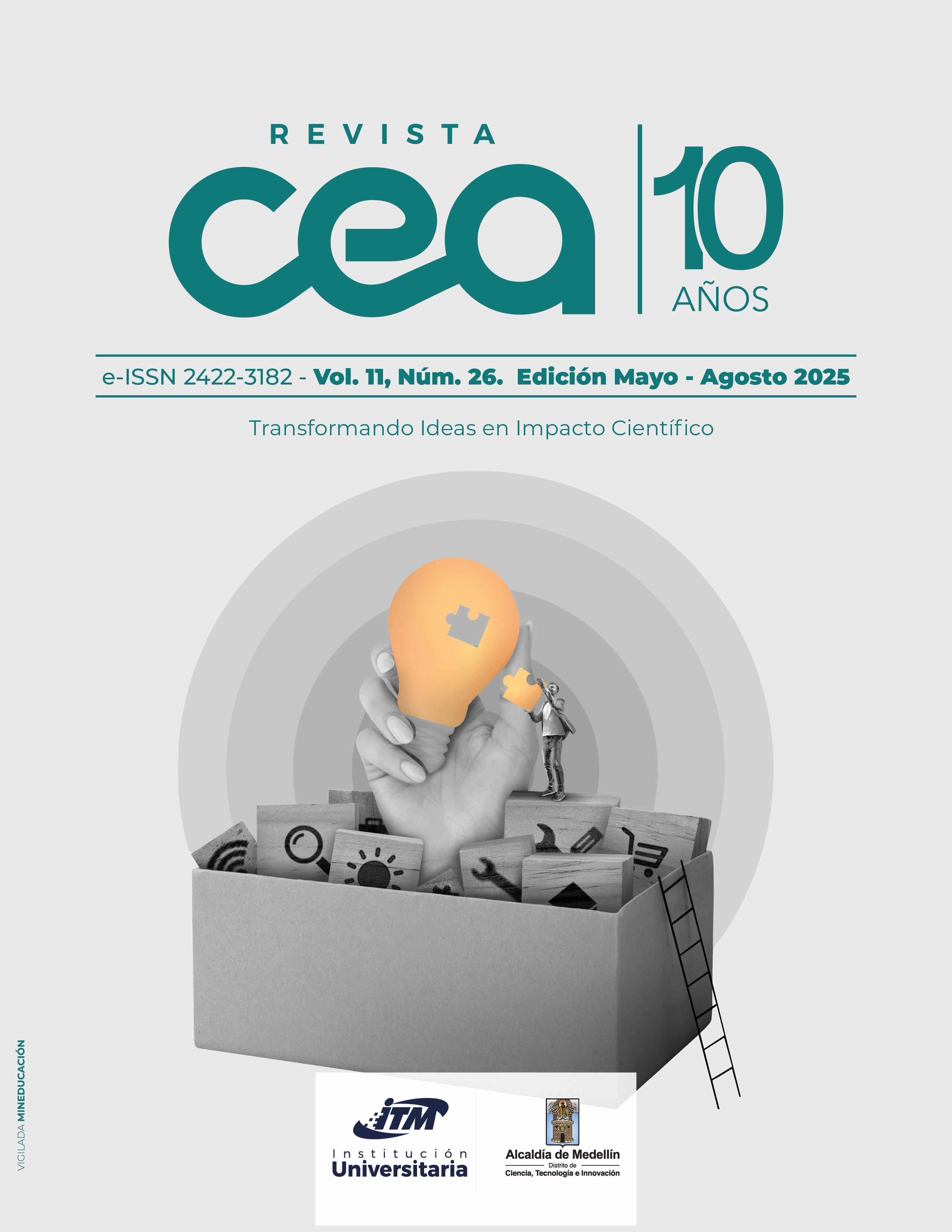Organizational Commitment: A Systematic Review and Theoretical Evolution of the Concept of Instrumental Commitment Propensity
Abstract
Objective: This review aims to examine the theoretical evolution of the construct known as instrumental commitment propensity.
Design/Methodology: Following the Preferred Reporting Items for Systematic Reviews and Meta-Analyses (PRISMA) guidelines, a systematic review was conducted to identify publications from 1958 to 2024 that address the concept of instrumental commitment propensity.
Findings: The theoretical development of the construct can be divided into two distinct stages. First, the costs, investments, and sacrifices stage (1958–2024), which is grounded in the cost-benefit expectations between the individual and the organization. Then, the instrumental commitment propensity stage (1975–2014), during which the concept evolves toward an individual’s inclination to remain with an organization based on the perceived advantages of staying.
Conclusions: Overall, the evolution of the theoretical understanding of instrumental commitment propensity reflects a transition from a cost-centered perspective to one that emphasizes perceived benefits. Notably, this shift allows for the anticipation of commitment from the early stages of employment. As a result, the findings offer a foundation for developing new measurement scales and informing talent management strategies.
Originality: This review identifies two key stages in the development of instrumental commitment propensity and contributes to the early identification of variables relevant to measuring organizational commitment.
References
Aiswarya, B., y Ramasundaram, G. (2017). Factors Influencing The Continuance Commitment of Employees. Asian Journal of Management, 8(4), 1041–1050. https://doi.org/10.5958/2321-5763.2017.00160.3
Aktar, A., y Pangil, F. (2020). HRM practices, employee engagement, organisational commitment and work-related social support. Journal for Global Business Advancement, 13(6), 688-705. https://doi.org/10.1504/JGBA.2020.113131
Allen, N. J., y Meyer, J. P. (1990). The measurement and antecedents of affective, continuance and normative commitment to the organization. Journal of Occupational Psychology, 63(1), 1–18. https://doi.org/10.1111/j.2044-8325.1990.tb00506.x
Angle, H. L., y Lawson, M. B. (1993). Changes in affective and continuance commitment in times of relocation. Journal of Business Research, 26(1), 3–15. https://doi.org/10.1016/0148-2963(93)90039-R
Arias Galicia, F. (2001). El compromiso personal hacia la organización y la intención de permanencia: Algunos factores para su incremento. Contaduría y Administración, (200), 5–12. https://www.redalyc.org/pdf/395/Resumenes/Resumen_39520002_1.pdf
Bateman, T. S., y Strasser, S. (1984). A longitudinal analysis of the antecedents of organizational commitment. Academy of Management Journal. Academy of Management, 27(1), 95–112. https://www.jstor.org/stable/255959
Becker, B. E., y Huselid, M. A. (2006). Strategic human resources management: Where do we go from here? Journal of Management, 32(6), 898–925. https://doi.org/10.1177/0149206306293668
Becker, H. (1960). Notes on the concept of commitment. American Journal of Sociology, 66(1), 32–40. http://dx.doi.org/10.1086/222820
Blau, P. (1964). Exchange and power in social life. John Wiley & Sons, Inc.
Brown, R. B. (1996). Organizational commitment: Clarifying the concept and simplifying the existing construct typology. Journal of Vocational Behavior, 49(3), 230–251. https://doi.org/10.1006/jvbe.1996.0042
Carson, K. D., y Carson, P. P. (2002). Differential Relationships Associated with Two Distinct Dimensions of Continuance Commitment. International Journal of Organization Theory y Behavior (Marcel Dekker), 5(3/4), 359. https://doi.org/10.1081/OTB-120014896
Chigeda, F., Ndofirepi, T. M., y Steyn, R. (2022). Continuance in organizational commitment: The role of emotional intelligence, work-life balance support, and work-related stress. Global Business and Organizational Excellence, 42(1), 22–38. https://doi.org/10.1002/joe.22172
Cohen, A. (2007). Commitment before and after: An evaluation and reconceptualization of organizational commitment. Human Resource Management Review, 17(3), 336–354. https://doi.org/10.1016/j.hrmr.2007.05.001
Cramer, D. (1996). Job satisfaction and organizational continuance commitment : a two-wave panel study. Journal of Organizational Behavior, 17(4), 389–400. https://doi.org/10.1002/(SICI)1099-1379(199607)17:4<389::AID-JOB755>3.0.CO;2-2
Devassia, B. P., Janarthanam, S., y Muço, K. (2025). Employee retention analysis: Work integration strategy in business management institutions. Corporate & Business Strategy Review, 6(1), 112–118. https://doi.org/10.22495/cbsrv6i1art11
Elstad, B. (2003). Continuance commitment and reasons to quit: A study of volunteers at a jazz festival. Event Management, 8(2), 99–108. https://doi.org/10.3727/152599503108751757
Ernest, E. E., y Vincent, E. (2025). Employee Commitment and Organizational Performance of SMES in Delta State. International Research Journal of Multidisciplinary Scope, 6(1), 472-481. https://doi.org/10.47857/irjms.2025.v06i01.02233
Fantahun, B., Dellie, E., Worku, N., y Debie, A. (2023). Organizational commitment and associated factors among health professionals working in public hospitals of southwestern Oromia, Ethiopia. BMC Health Services Research, 23(180). https://doi.org/10.1186/s12913-023-09167-3
Ganzach, Y., Pazy, A., Ohayun, Y., y Brainin, E. (2002). Social exchange and organizational commitment: Decision-making training for job choice as an alternative to the realistic job preview. Personnel Psychology, 55(3), 613–637. https://doi.org/10.1111/j.1744-6570.2002.tb00123.x
Ghosh, S., y Swamy, D. (2014). A Literature Review on Organizational Commitment – A comprehensive summary. Journal of Engineering Research and Applications, 4(12), 04–14. https://www.ijera.com/papers/Vol4_issue12/Part%20-%201/B0412010414.pdf
Gilliland, D. I., y Bello, D. C. (2002). Two sides to attitudinal commitment : The effect of calculative and loyalty commitment on enforcement mechanisms in distribution channels. Academy of Marketing Science Journal, 30(1), 24. https://doi.org/10.1177%2F03079450094306
Han, H., Kiatkawsin, K., y Kim, W. (2019). Traveler loyalty and its antecedents in the hotel industry: Impact of continuance commitment. International Journal of Contemporary Hospitality Management, 31(1), 474–495. https://doi.org/10.1108/IJCHM-04-2017-0237
Han, E. J., y Cai, L. (2024). Impact of Psychological Capital on Organizational Commitment and Turnover Intention: Evidence from Korean Flight Attendants. Iranian Journal of Public Health, 53(7), 1578. https://doi.org/10.18502/ijph.v53i7.16052
Hrebiniak, L. G., y Alutto, A. J. (1972). Personal and role-related factors in the development of organizational commitment. Administrative Science Quarterly, 17(4), 555–573. https://doi.org/10.2307/2393833
Iverson, R. D., y Buttigieg, D. M. (1999). Affective, Normative and Continuance Commitment: Can the “Right Kind” of Commitment be Managed? Journal of Management Studies, 36(3), 307–333. https://doi.org/10.1111/1467-6486.00138
Jaros, S. J. (2012). Evaluating the “Few Alternatives” Dimension of Continuance Commitment : A Comment on Johnson, Chang, and Yang (2010). Journal of Leadership, Accountability y Ethics, 9(4), 63–71. http://www.na-businesspress.com/JLAE/JarosSJ_Web9_4_.pdf
Jaros, S., y Culpepper, R. A. (2014). An analysis of Meyer and Allen’s continuance commitment construct. Journal of Management and Organization, 20(1), 79–99. https://doi.org/10.1017/jmo.2014.21
Jiménez Hernández, R., Bustamante Valenzuela, G. E., y Bustamante Valenzuela, A. C. (2012). Compromiso organizacional: Una garantía para la subsistencia de las pequeñas y medianas empresas. Global Conference on Business and Finance Proceedings, 7(2), 1348–1351. https://core.ac.uk/download/pdf/76593459.pdf#page=1373
Johnson, R. E., y Chang, C. H. (2006). " I " is to continuance as " We " is to affective : the relevance of the self-concept for organizational commitment. Journal of Organizational Behavior, 27(5), 549–570. https://doi.org/10.1002/job.364
Kavaliauskiene, Z. (2012). Hierarchical dependence of antecedents of employee’s continuance commitment. Social Research, 1(26), 53–59. https://epublications.vu.lt/object/elaba:6100975/
Kavitha, S. R. (2025). The Impact of Human Resource Practices on Organizational Performance: The Mediating Role of Work Engagement. International Research Journal of Multidisciplinary Scope, 6(1), 213-225. https://doi.org/10.47857/irjms.2025.v06i01.02661
Ko, J. W., Price, J. L., y Mueller, C. W. (1997). Assessment of Meyer and Allen’s three-component model of organizational commitment in South Korea. Journal of Applied Psychology, 82(6), 961–973. https://doi.org/10.1037/0021-9010.82.6.961
Kothiyal, N. (2005). Three-Component Model of Organizational Commitment: Reexamination of Psychometric Properties of Continuance Commitment Scale. Indian Journal of Industrial Relations, 41(1), 117–130. https://www.jstor.org/stable/27767997
Lee, T. W., Ashford, S. J., Walsh, J. P., y Mowday, R. T. (1992). Commitment Propensity, Organizational Commitment, and Voluntary Turnover: A Longitudinal Study of Organizational Entry Processes. Journal of Management, 18(1), 15–32. https://doi.org/10.1177%2F014920639201800102
Liu, X., y Deng, J. (2011). Development of Organizational Commitment Based on the Social Exchange Theory [conferencia]. International Conference on Management and Service Science, Wuhan, China, 2011. https://doi.org/10.1109/ICMSS.2011.5997998
Marsh, R. M., y Mannari, H. (1977). Organizational commitment and turnover: A prediction study. Administrative Science Quarterly, 22(1), 57–75. https://doi.org/10.2307/2391746
Mathieu, J., y Zajac, D. (1990). A review and meta-analysis of the antecedents, correlates, and consequences of organizational commitment. Psychological Bulletin, 108(2), 171–194. https://doi.org/10.1037/0033-2909.108.2.171
McGee, G. W., y Ford, R. C. (1987). Two (or more?) dimensions of organizational commitment: Reexamination of the affective and continuance commitment scales. Journal of Applied Psychology, 72(4), 638–641. https://doi.org/10.1037/0021-9010.72.4.638
Meyer, J. P., y Allen, N. J. (1984). Testing the “side-bet theory” of organizational commitment: Some methodological considerations. Journal of Applied Psychology, 69(3), 372–378. https://doi.org/10.1037/0021-9010.69.3.372
Meyer, J. P., y Allen, N. j. (1987). A longitudinal analysis of the early development and consequences of organizational commitment. Canadian Journal of Behavioural Science / Revue Canadienne Des Sciences Du Comportement, 19(2), 199–215. https://doi.org/10.1037/h0080013
Meyer, J. P., y Allen, N. J. (1991). A three component conceptualization of organizational commitment. Human Resource Management Review, 1(1), 61–89. https://doi.org/10.1016/1053-4822(91)90011-Z
Meyer, J. P., Allen, N. J., y Gellatly, I. R. (1990). Affective and continuance commitment to the organization: Evaluation of measures and analysis of concurrent and time-lagged relations. Journal of Applied Psychology, 75(6), 710–720. https://doi.org/10.1037/0021-9010.75.6.710
Meyer, J. P., Bobocel, D. R., y Allen, N. J. (1991). Development of Organizational Commitment During the First Year of Employment: A Longitudinal Study of Pre- and Post-Entry Influences. Journal of Management, 17(4), 716. https://doi.org/10.1177%2F014920639101700406
Meyer, J. P., Stanley, L. J., y Parfyonova, N. M. (2012). Employee commitment in context: The nature and implication of commitment profiles. Journal of Vocational Behavior, 80(1), 1–16. https://doi.org/10.1016/j.jvb.2011.07.002
Nangoli, S., Kemboi, A., Lagat, C., Namono, R., Nakyeyune, S., y Muhumuza, B. (2021). Strategising for continuance commitment: the role of servant leadership behaviour. World Journal of Entrepreneurship, Management and Sustainable Development, 17(1), 51–61. https://www.emerald.com/insight/content/doi/10.1108/wjemsd-01-2020-0008/full/html
Nouri, H., y Kyj, L. (2014). An experimental examination of the combined effects of normative and instrumental commitments on budgetary slack creation: Comparing individuals versus group members. Advances in Management Accounting., 22, 225–260. https://doi.org/10.1108/S1474-7871(2013)0000022014
Nguyen, V. T., y Nguyen, T. K. (2021). Factors affecting organizational commitment: An empirical study of information technology sector in Vietnam. The Journal of Asian Finance, Economics and Business, 8(11), 277-284. https://doi.org/10.13106/jafeb.2021.vol8.no11.0277
Park, S. M., y Rainey, H. G. (2007). Antecedents, Mediators, and Consequences of Affective, Normative, and Continuance Commitment: Empirical Tests of Commitment Effects in Federal Agencies. Review of Public Personnel Administration, 27(3), 197-226. https://doi.org/10.1177/0734371X06296866
Pierce, J. L., y Dunham, R. B. (1987). Organizational Commitmen: Pre-Emplyment Propensity and Initial Work Experiences. Journal of Management, 13(1), 163–178. https://doi.org/10.1177/014920638701300113
Powell, D. M., y Meyer, J. P. (2004). Side-bet theory and the three-component model of organizational commitment. Journal of Vocational Behavior, 65(1), 157–177. https://doi.org/10.1016/S0001-8791(03)00050-2
Randall, D. M. (1993). Cross-cultural research on organizational commitment: A review and application of Hofstede’s value survey module. Journal of Business Research, 26(1), 91–110. https://doi.org/10.1016/0148-2963(93)90045-Q
Ratnasahara, E. D., Yuliastanti, R., Suyono, J., Chauhan, R., y Thakar, I. (2021). Affective Commitment, Continuance Commitment, Normative Commitment, and Turnover Intention in Shoes Industry. Annals of the Romanian Society for Cell Biology, 25(3), 1937–1945. http://annalsofrscb.ro/index.php/journal/article/view/1640
Rego, A., Leitte, R., Carvalho, T., Freire, C., y Vieira, A. (2004). Organizational commitment: Toward a different understanding of the ways people feel attached to their organizations. Management Research: Journal of the Iberoamerican Academy of Management, 2(3), 201–218. https://doi.org/10.1108/15365430480000510
Ritzer, G., y Trice, H. M. (1969). An empirical study of Howard Becker’s Side-Bet Theory. Social Forces, 47(4), 475–478. https://doi.org/https://doi.org/10.2307/2574537
Rodrigues, A. C. de A., Bastos, A. V. B., y Moscon, D. C. B. (2019). Delimiting the concept of organizational commitment: empirical evidence of the overlap between the entrenchment and the continuance mindset. Organizações y Sociedade, 26(89), 338–358. https://doi.org/10.1590/1984-9260897
Rusu, R. (2013). Affective Organizational Commitment, Continuance Organizational Commitment, or Normative Organizational Commitment? Academiei Fortelor Terestre, 2(70), 192–197.
Safari, H., Cabrita, M. d. R., Hesan, M., Maleki, M., y Mirzaeirabore, F. (2018). Ranking new comers to work based on commitment propensity through hybrid method of AHP and TOPSIS. Management and Production Engineering Review, 9(4), 86–95. https://doi.org/10.24425/119549
Sallan, J. M., Simo, P., Fernandez, V., y Enache, M. (2010). Estudio de la relación entre el compromiso organizativo y la intención de abandonar la organización: Modelo de dos componentes de compromiso de continuidad. Cuadernos de Gestión, 10(2), 15–28. https://doi.org/10.5295/cdg.090151js
Sam-Mensah, R., Bingab, B. B., Boakye, K. O., y Boateng, R. K. (2025). Safety first, retention forever: enhancing commitment and reducing turnover through safety practices. Future Business Journal, 11(1), 52. https://doi.org/10.1186/s43093-025-00475-0
San-Martín, S., Jiménez, N., Rodríguez-Torrico, P., y Piñeiro-Ibarra, I. (2020). The determinants of teachers’ continuance commitment to e-learning in higher education. Education and Information Technologies, 25(4), 3205–3225. https://doi.org/10.1007/s10639-020-10117-3
Shore, L. M., y Wayne, S. (1993). Commitment and employee behavior: Comparison of affective commitment and continuance commitment with perceived organizational support. Journal of Applied Psychology, 78(5), 774–780. https://doi.org/10.1037/0021-9010.78.5.774
Somers, M. J. (2009). The combined influence of affective, continuance and normative commitment on employee withdrawal. Journal of Vocational Behavior, 74(1), 75–81. https://doi.org/10.1016/j.jvb.2008.10.006
Stumpf, S. A., y Hartman, K. (1984). Individual Exploration to Organizational Commitment or Withdrawal. Academy of Management Journal, 27(2), 308–329. https://psycnet.apa.org/record/1984-27461-001
Suliman, A., y Iles, P. (2000). Is continuance commitment beneficial to organizations? Commitment-performance relationship: a new look. Journal of Managerial Psychology, 15(5), 407–422. https://doi.org/10.1108/02683940010337158
Swailes, S. (2002). Organizational Commitment: A Critique of the Construct and Measures. International Journal of Management Reviews, 4(2), 155–178. https://doi.org/10.1111/1468-2370.00082
Taing, M. U., Granger, B. P., Groff, K. W., Jackson, E. M., y Johnson, R. E. (2011). The Multidimensional Nature of Continuance Commitment: Commitment Owing to Economic Exchanges Versus Lack of Employment Alternatives. Journal of Business and Psychology, 26(3), 269–284. https://doi.org/10.1007/s10869-010-9188-z
Thi Bi Chi, H., y Hanh, L. N. (2016). Affective and Instrumental Commitment: A Special Reference to Self-Service Technologies in Domestic and Foreign Banks. Journal of Economic Development, 23(2), 137–160. https://vjol.info.vn/index.php/ed/article/view/34117
Urrútia, G., y Bonfill, X. (2010). Declaración PRISMA: una propuesta para mejorar la publicación de revisiones sistemáticas y metaanálisis. Medicina Clínica, 135(11), 507–511. https://doi.org/10.1016/j.medcli.2010.01.015
Vandenberg, R. J., y Self, R. M. (1993). Assessing Newcomers’ Changing Commitments to the Organization During the First 6 Months of Work. Journal of Applied Psychology, 78(4), 557–568. https://doi.org/10.1037/0021-9010.78.4.557
Vandenberghe, C., y Panaccio, A. (2012). Perceived sacrifice and few alternatives commitments: The motivational underpinnings of continuance commitment’s subdimensions. Journal of Vocational Behavior, 81(1), 59–72. https://doi.org/10.1016/j.jvb.2012.05.002
Wang, C. L., Indridason, T., y Saunders, M. N. K. (2010). Affective and continuance commitment in public private partnership. Employee Relations, 32(4), 396–417. https://doi.org/10.1108/01425451011051613
Wasti, S. A. (2002). Affective and continuance commitment to the organization: Test of an integrated model in the Turkish context. International Journal of Intercultural Relations, 26(5), 525–550. https://doi.org/10.1016/S0147-1767(02)00032-9
Wasti, S. A. (2005). Commitment profiles: Combinations of organizational commitment forms and job outcomes. Journal of Vocational Behavior, 67(2), 290–308. https://doi.org/10.1016/j.jvb.2004.07.002
Weibo, Z., Kaur, S., y Jun, W. (2010). New development of organizational commitment: A critical review (1960 - 2009). African Journal of Business Management, 4(1), 12–20. https://academicjournals.org/article/article1380698607_WeiBo%20et%20al.pdf
Werbel, J., Landau, J., y DeCarlo, T. E. (1996). The Relationship of Pre-entry Variables to Early Employment Organizational Commitment. Journal of Personal Selling y Sales Management, 16(2), 25–36. https://doi.org/10.1080/08853134.1996.10754051
Whitener, E. M., y Walz, P. M. (1993). Exchange Theory Determinants of Affective and Continuance Commitment and Turnover. Journal of Vocational Behavior, 42(3), 265–281. https://doi.org/10.1006/jvbe.1993.1019
Wiener, Y., y Vardi, Y. (1980). Relationships between job, organization, and career commitments and work outcomes—An integrative approach. Organizational Behavior and Human Performance, 26(1), 81–96. https://doi.org/10.1016/0030-5073(80)90048-3
Yücel, İ., Gomes, D. R., Ribeiro, N., y Özlok, K. K. (2024). The Mediating Role of Self-Esteem in the Relationship Between Perceived Ethnic Discrimination and Continuance Commitment of Migrant Workers. Psychological Reports. https://doi.org/10.1177/00332941241226686
Downloads
Copyright (c) 2025 Mariana Ivonne Nava Soto, Emmanuel Francisco García Uribe, Patricia Ramos Rubio

This work is licensed under a Creative Commons Attribution-NonCommercial-ShareAlike 4.0 International License.

| Article metrics | |
|---|---|
| Abstract views | |
| Galley vies | |
| PDF Views | |
| HTML views | |
| Other views | |







